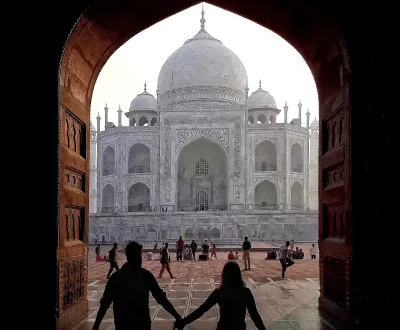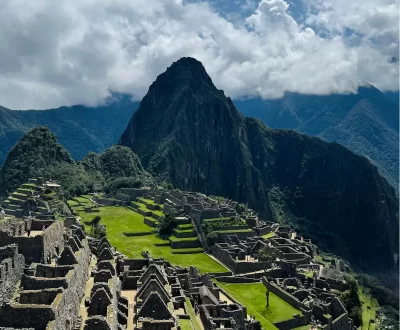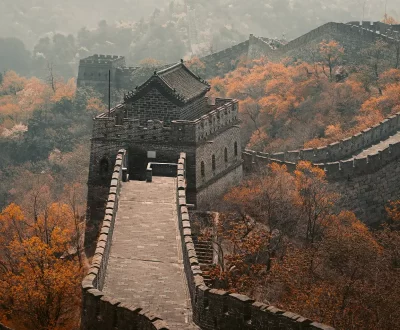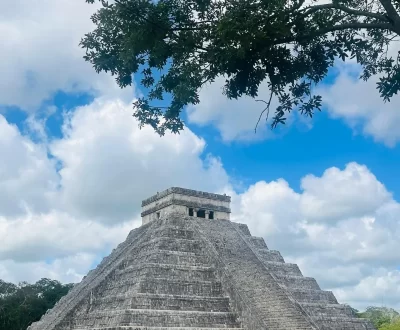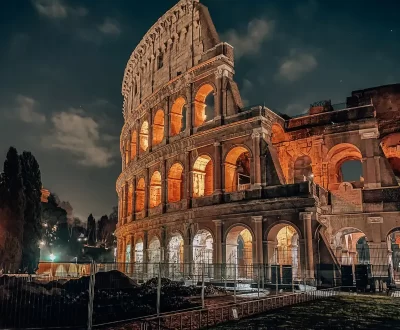
Christ the Redeemer is one of the most famous religious monuments in the world & One of the Brazil’s Famous landmark. It stands proudly on top of Mount Corcovado in Rio de Janeiro, Brazil. Since it was finished in 1931, this tall Art Deco statue has come to represent Christianity, Brazilian culture, and the best of human art.
Why the tall statue?
The idea for Christ the Redeemer (now one of the Brazil’s Famous landmark) came about in the 1850s when priest Pedro Maria Boss suggested building a Catholic monument to honor Princess Isabel of Brazil. But the project stayed on hold until 1921, when the Catholic Church, worried about losing support in Brazil, brought it back to life.
The Roman Catholic archdiocese of Rio de Janeiro suggested putting a statue of Christ on top of Mount Corcovado, which is 2,310 feet high, so that it could be seen from anywhere in Rio. People asked President Epitácio Pessoa to let them build on this high point, which would make the statue a symbol of faith for the whole city.
History of Construction and Architectural Success
The building process began in 1922 and lasted for nine years, ending in 1931. The project made the world’s biggest Art Deco sculpture and also marked the 100th anniversary of Brazil’s independence from Portugal.
French-Polish sculptor Paul Landowski worked with Brazilian engineer Heitor da Silva Costa and French engineer Albert Caquot to make the statue. The facial features were made by Romanian sculptor Gheorghe Leonida, who made sure that the statue’s calm and caring expression would continue to inspire millions of people.
Art Deco Style and Some of the Building Details
The arms of Christ the Redeemer are 92 feet (28 meters) wide, and the statue is 98 feet (30 meters) tall. The statue is 124 feet tall, including the 26-foot (8-meter) pedestal it stands on.
The building is made of reinforced concrete and covered in thousands of triangular soapstone tiles. It weighs 635 metric tons. This Art Deco work is the best example of 1920s architecture, which was known for its geometric shapes and smooth lines.
Mount Corcovado: The Ideal location
The statue is in the perfect spot on Mount Corcovado, which is 2,310 feet above sea level in Tijuca National Park. Because the mountain is so high, Christ the Redeemer can be seen from all over Rio de Janeiro and the surrounding areas.
The first electric railway in Brazil, built in the late 1800s, was built so that people could see the whole city from a distance. This existing infrastructure made it easier to get to the construction site and still serves millions of visitors each year.
Problems and Solutions of builiding at this location
It was very hard to move building materials up Mount Corcovado, and engineers had to come up with new ways to do it. The current railway system was very important for getting concrete, steel, and soapstone tiles to the top of the mountain.
During the five years of construction, workers stood on scaffolds without modern safety gear. It was amazing that no one died during construction, which many people thought was a miracle given how dangerous and difficult the work was.
Cultural and Religious Importance of Brazil’s Famous landmark
Christ the Redeemer is more than just a tourist attraction; it is also the world’s first open-air sanctuary. The statue’s arms are outstretched to form a cross shape, which stands for welcome and blessing for people who live in or visit Rio.
Different groups see different things in the statue’s symbolism. The open arms can mean divine embrace, protection, or welcome. This makes it meaningful to people of many faiths and cultures, but it is still very much a part of Christian tradition.
Brazil’s Famous landmark & is effect of tourism
The statue is one of Brazil’s most popular tourist spots, drawing millions of visitors each year. People can get to the top by taking the old cog railway or driving through Tijuca National Park.
The view is amazing, with 360-degree views of Rio de Janeiro, including famous sites like Sugarloaf Mountain, Copacabana Beach, and Guanabara Bay. Visits at sunset and sunrise are especially good for taking pictures.
A recent study indicated that the statue generates approximately BRL 1.46 billion (around USD 270 million) in annual tourism revenue.
This influx of tourism supports over 21,000 direct and indirect jobs in the region, including roles in the hospitality, transportation, and retail sectors.
Protection from lightning and maintenance
Because it is on an exposed mountain and gets hit by lightning a lot, Christ the Redeemer needs to be taken care of all the time. A $4 million renovation that was finished in 2010 fixed problems with the structure and damage from the weather.
The statue has been hit by lightning many times, so in 2014, more lightning rods were put up. These safety systems help keep the statue safe and sound while also keeping visitors safe during electrical storms.
Status of World Recognition and Wonder
A worldwide online poll in 2007 named Christ the Redeemer one of the New Seven Wonders of the World. This honor solidified its place as one of the greatest cultural and architectural achievements in history.
The statue’s placement next to ancient wonders like Petra and Machu Picchu shows how important it is to modern global culture and how it can inspire people from all walks of life.
Best views!
There are many ways for both professional and amateur photographers to show off the beauty of Christ the Redeemer. The statue’s location makes for dramatic shots with the Rio landscape in the background, making famous pictures that show Brazil to the world.
The light changes throughout the day, from the warm golden hour to the dark storm clouds. The white soapstone surface of the statue reflects light in a beautiful way that makes it possible to take pictures of it in many different ways.
Christ the Redeemer is an amazing combination of faith, art, and engineering that still inspires people all over the world. This beautiful statue stands for people’s desire to build monuments that last and go beyond religious and cultural differences. Christ the Redeemer is a powerful reminder of human creativity and spiritual devotion that has lasted through the ages, whether people see it as a religious symbol, an architectural achievement, or a cultural icon.
Wait What? don’t miss reading more about the other seven wonders of world
2. Taj Mahal
3. Machu Picchu
4. Petra
5. Chichen Itza
6. Colosseum
Check out amazing places to stay in Rio de janerio, Brazil
More from our blog
See all postsRecent Posts
- Places to visit in Varkala 3 September, 2025
- Taj Mahal the Monument of Love 3 September, 2025
- Lost City of the Incas Machu Picchu Peru 3 September, 2025


